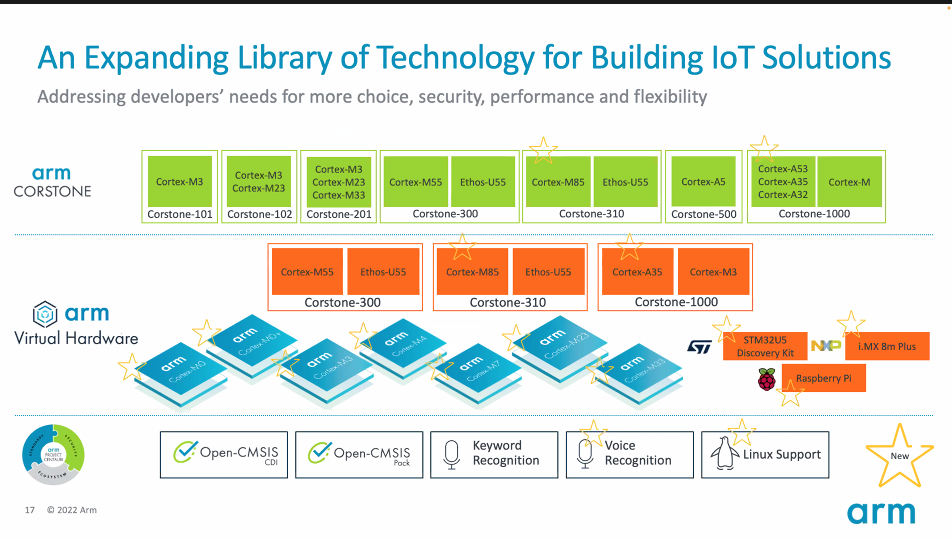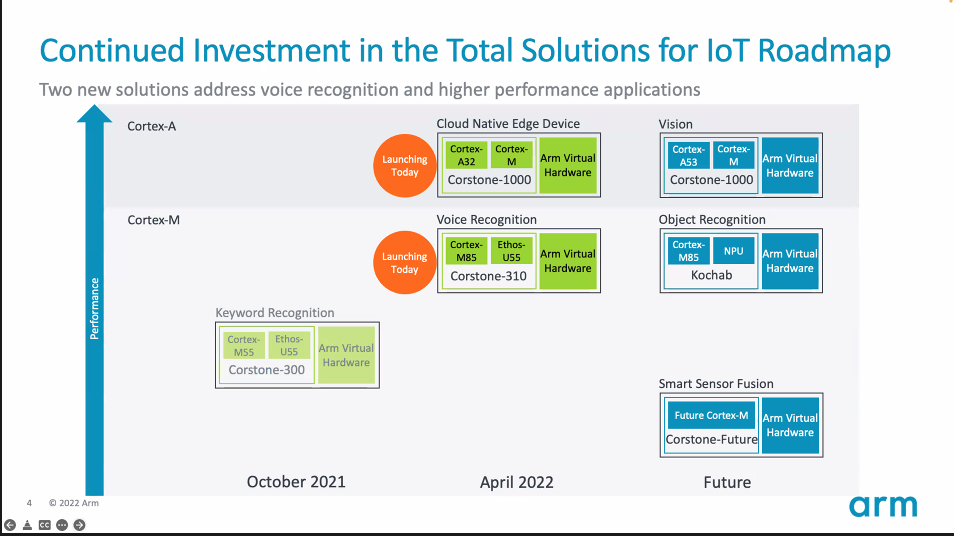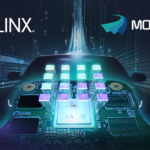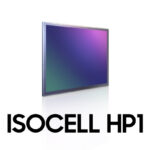ASIA ELECTRONICS INDUSTRYYOUR WINDOW TO SMART MANUFACTURING
ARM Unveils Two Subsystem Solutions for IoT Edge Device Markets
IoT and edge computing devices are key technology enablers for smart manufacturing, smart grids, smart building systems, and even robotic systems.
Coming built with more and more functionalities like sound and image recognition, system requirements for these IoT and edge computing devices are getting more and more complex, calling for higher performance and tither security. At the same time, device makers are calling for faster time to market, pressing core architecture makers like ARM to release flexible and scalable architectures.
To keep up, ARM Inc. came up with two new computing architecture for IoT devices – two new subsystems Corstone 310 and Corstone 1000.
Designed to power voice recognition-enabled IoT devices, the Corstone 310 subsystem comes built with ARM Cortex M85 computing core and Ethos U55 NPU or neural processing unit cores for machine learning.
The Corstone 1000 is designed to power cloud native edge computing devices, incorporating Cortex-A53 and Cortex-M cores.
Both of the two new computing architectures are the latest of ARM total solutions for IoT portfolio, following the commercial rollout of Corstone 300 for keywork recognition devices.
The ARM Total Solution for IoT portfolio is ARM’s comprehensive offerings to address fast-growing IoT device markets, consisting of three key elements – ARM Corstone subsystem, Arm Virtual hardware, and Arm Project Centauri.
The Corstone subsystem is a pre-integrated and pre-validated building blocks that comes built with ARM CPU, ARM MPU and system IPs.
This subsystem is designed to help silicon partners to build mass production system for faster time-to-market.
The ARM Virtual hardware is a cloud-based chip development support platform that allows its silicon partners to build cloud-based development environment for automatic build-up and tests, enabling them to develop related software before they finalize hardware design.
Cortex-M: Core of IoT Edge Devices

The ARM Project Centauri represents Arm’s standardization effort not only to support security built-in, but also allow its silicon partners to reuse software across a wide variety of devices.
All three offerings are designed to simplify and accelerate developments of IoT devices.
According to ARM, IoT market has been growing so rapidly that the core architecture provider has been licensing tons of ARM M series of processor cores for IoT edge devices. As of Dec. 2021, for example, ARM had licensed 215 billion of ARM cores in cumulative numbers, compared with the cumulative licenses of 70 billion units. That represent 140 billion units more licenses or shipments during the past 6 years. And, ARM M cores for IoT edge devices account for the majority of the shipments, positioning ARM as global leader of computing cores for IoT edge devices.
ARM will keep focusing much of its resources in IoT edge device market.
The Corstone 310 is the most advanced subsystem ever available for smart thermometers, smart speakers, robotics, drones, secure system controllers, and sensor hubs. .
At the center of the Corstone 310 is ARM Cortex-M85 that is the highest performance Cortex-M processor core ever of the M series across both traditional and ML or machine learning workloads.
Built around ARM8.1-M architecture, the Cortex-M85 enables silicon partners to build MCUs and embedded SoCs for ioT and embedded applications that require enhanced digital signal processing and machine learning capabilities.
The Ethos U55 is a sort of NPU that performs multiple machine learning tasks.
Scale Up

With ARM Cortex-A series at its core, the Corstone 1000 enables easy implementation of heterogeneous systems with Cortex-M processors, offering high performance and extreme power efficiency in a single system.
The Cortex-A processor is so scalable from Cortex-A32 to Cortex-A53 that the Corstone-1000 can address a wide verity of applications from smart wearables, gateways, and high-end smart cameras.
ARM’s roadmap doesn’t stop there. To address more high-performance applications for vision and object recognition devices and sensor fusion hubs, ARM plans to release a future generation of Kochab and Corstone Future solutions.
The Kochab will be based on Cortex-M85, and new breed of NPUs and Arm virtual hardware. The Corstone Future will be built around future generation of Cortex-M series.
The Corstone 1000 will be also upgraded and scaled up to address vision recognition applications, coming built with Cortex-A53.




